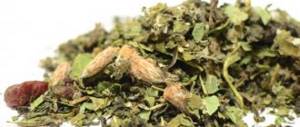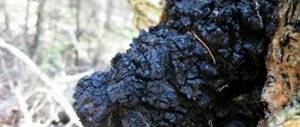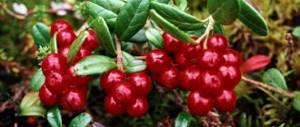It is known that chicory is one of the most commonly used plants for various diseases, which has an anti-inflammatory, diuretic, vasodilator, choleretic, and calming effect. And this is not a complete list of its properties.
But, unfortunately, if for some people chicory becomes a miraculous healing agent, then it can cause serious damage to the health of others. Therefore, before you start using chicory, you should take into account all its contraindications. What do you need to know?
Harm and benefits of chicory as a diuretic
Until now, doctors have not come to a consensus about the usefulness or harmfulness of the plant. Some equate it with coffee and believe that it is harmful to health. Others praise it and equate it almost to a “miracle” drink. It is undeniable that chicory contains many useful components and vitamins. But not everyone and not always they can be useful and are recommended.
Beneficial features
The plant is used in folk medicine to treat many diseases, including kidney problems. It is able to have a diuretic effect and cleanse the kidneys and the entire body. If consumed regularly, it can improve the function of the intestines, stomach and pancreas. With its help, inflammation and microflora disturbance are eliminated. The plant has a beneficial effect on the skin, nervous system, hair, and immunity.
The benefits of soluble chicory are negligible.
The answer to the question of whether chicory is a diuretic is definitely yes. The plant is able to cleanse and rid the liver and kidneys of accumulated toxins. With its help, bile is removed from the body. The plant is used for weight loss because it contains inulin, an enzyme that lowers the amount of sugar in the blood.
Harmful effects
You should not overuse chicory if you have heart pathologies. If you drink in large quantities, it may not bring benefit, but the opposite effect, pressure surges and arrhythmia will occur. This drink is contraindicated for people with varicose veins. It should be taken with caution so as not to harm the liver and intestines. Doctors do not recommend it to women during lactation, since the drug causes increased agitation in children. It is possible to reduce the amount of milk. It is important to observe the required portions of the plant and then the chances of harmful effects are minimal.
Plant characteristics
Chicory is a wild biennial plant that belongs to the Asteraceae family. It has a long stem, strong root and soft blue, sometimes pink and white flowers. In folk medicine, all parts of the plant are used. There is also chicory, which is specially grown and used as a dietary supplement in cooking. Common chicory begins to bloom from the end of July and continues until September. At this time, they begin to collect it - first the inflorescences, then the roots. They are sorted, dried and stored in dark glass containers. When storing the plant in ground form, you need to ensure that no lumps form and no moisture gets in. When exposed to moisture, crushed chicory turns to stone after a while.
Vitamin composition
Chicory root is beneficial; it contains the largest amount of nutrients and vitamins. This drug is safely used for diabetes, since it contains inulin (a polysaccharide that serves as a sugar substitute). Chicory is filled with organic acids, pectin, carotene, and protein components. Macro- and microelements make up most of the drug: calcium, potassium, sodium, phosphorus and magnesium. It is rich in vitamins A, B, C. Such a set of useful substances cannot but have a positive effect on the body.
Chicory or beware of allergies!
It turns out that the stems and leaves of chicory salad contain a lot of ascorbic acid, or vitamin C. This composition can contribute to the occurrence of allergic reactions in people predisposed to them. Therefore, they need to avoid consuming chicory or limit themselves to minimal doses, keeping their well-being under control.
By the way, even without eating chicory, you can feel how allergenic it is. This has been proven by the huge number of cases of allergies among fruit and vegetable sellers, whose products included chicory.
Cooking recipes
To get results, you need to use chicory roots. To prepare this plant, first the roots are washed and dried. Then they are fried a little until the moisture from the roots evaporates. The roasted roots are ready to eat. Decoctions, teas, infusions are prepared from them, and used as lotions and compresses. When drinking chicory tea, you may feel a constant urge to go to the toilet, since the roots are a strong diuretic.
To prepare tea, take a teaspoon of fried roots and add cold water (250 ml), then bring to boil. After boiling, cook, then strain and drink. You can add honey or milk to tea. Chicory decoction also has a beneficial effect on the body. You need to take a tablespoon of the product per 400 ml of water, boil it and let the broth brew for 2 hours. After preparation, strain and drink ½ glass three times a day.
Useful properties and indications for use
The plant has a hypnotic effect.
Due to its medicinal properties, chicory is very effective for many ailments. It has the following effects:
- diuretic;
- calming;
- hypoglycemic;
- antipyretic;
- choleretic;
- sleeping pills;
- vasodilator;
- anti-inflammatory;
- bactericidal;
- wound healing;
- restorative.
It is recommended for use in the following cases:
- for diseases of the kidneys and urinary tract;
- disruption of the gastrointestinal tract;
- cardiovascular diseases;
- nervous disorders;
- cold;
- diabetes
Foods that cause kidney stones
Statistics show that every 10 people face a problem such as urolithiasis. The feeling when a stone comes out is impossible to forget. This process is believed to cause the most severe pain known to humans.
Kidney stones can have different compositions:
● Carbonate stones
– calcium salts of carbonic acid.
They come in various shapes, soft and smooth to the touch.
● Phosphates
– salts of phosphoric acid.
They have a rough surface, are soft, and crumble easily.
●
Oxalates
are salts of oxalic acid.
They have an uneven surface, often with sharp edges and spikes, and are very hard.
●
Urates
are salts of uric acid.
They have a dense structure with a smooth surface.
Sometimes there is a mixed type of kidney stones, which is considered the most difficult option for treatment.
Oxalates are the most popular stones - they are found in 80% of cases of urolithiasis.
Factors contributing to the appearance of kidney stones can be divided into 2 groups.
●
Endogenous
- genetic factors, urinary tract infections, anatomical changes leading to impaired urine outflow, metabolic and vascular disorders in the kidney.
●
Exogenous
– physical inactivity, age, gender, race, environment, taking certain medications and diet.
As practice shows, proper nutrition in the treatment of urolithiasis is half the success. We will talk about some products that are a source of risk in this article.
Foods rich in oxalates
Oxalate stones are considered the most dangerous of all kidney stones. Firstly, they are very hard and difficult to dissolve or crush with ultrasound.
Secondly, they always contain sharp edges and thorns, which, injuring tissue, often cause serious bleeding.
Therefore, if you are at risk, first of all, limit your consumption of the following foods:
●
Rhubarb
●
Chard
●
Soy sauce
●
Chocolate
●
Spinach
●
Sweet potatoes
Animal protein
Animal proteins including meat, fish and eggs contain purines, the end product of which is uric acid.
If for some reason, purine metabolism is disrupted, uric acid is not excreted to physiologically normal levels. Its concentration in the blood increases and crystals begin to form, which are subsequently deposited under the skin, in the joints and kidneys.
Foods High in Sodium
Eating foods rich in sodium causes an increase in the amount of calcium excreted in the urine. So those who like to over-salt are more likely to develop calcareous kidney stones.
Therefore, if you do not want to “meet” urolithiasis, limit your salt intake to 2-3 g per day.
It is worth considering that many products: sausages, smoked meat, most ready-made meals and semi-finished products, potato chips, cheeses, canned meat and fish, canned vegetables, crackers, sauces - contain a large amount of salt.
Foods rich in fructose
Eating foods containing fructose inhibits the removal of uric acid from the body, which significantly increases the risk of developing stones.
While fructose in fruit is not problematic, levels in sugary syrups, fruit juices and other sweet substances tend to be very high.
Sweeteners
Numerous studies have repeatedly confirmed the link between artificial sweeteners and poor kidney function.
High consumption of sweeteners impairs the kidneys' ability to remove calcium, uric acid and oxalates from the body. Thus, sweeteners are not safe for people prone to urolithiasis.
Calcium supplements
Calcium that enters the body with food has no effect on kidney stones, but the consumption of calcium supplements increases the chances of developing urolithiasis.
The fact is that dietary calcium (from food) binds to oxalates in the digestive system, and not in the kidneys, thus eliminating the possibility of stone formation.
Therefore, it is better to consume food products rich in calcium rather than calcium supplements (milk, cottage cheese, kefir, sesame seeds, whole grain wheat products, etc.)
Carbonated drinks
Carbonated drinks, bottled juices and energy drinks increase your risk of developing kidney disease.
Phosphoric acid, which is found in large quantities in carbonated drinks, can affect the urinary system. So, just 1 glass of soda increases the risk of kidney stones by 15%.
In particular, carbonated drinks contain large amounts of sugar, which interferes with the absorption of calcium and leads to the deposition of the mineral in the kidneys.
Caffeine
Caffeine is a substance that puts our kidneys in a state of stress. Caffeine provokes the removal of calcium from the bones and the sedimentation of its particles in the bladder or ureter. And this is an alarm bell, indicating the imminent appearance of kidney stones.
In addition, caffeine has a mild diuretic effect, which contributes to dehydration of the body, which means it creates the preconditions for the formation of stones.
Don't forget that caffeine is present not only in coffee, but also in some types of tea, as well as in sweet carbonated drinks.
Thank you for your interest in our channel. If you liked the article, please like it and share it with your friends on social networks. Don't forget to also subscribe to our channel so you don't miss new posts.
Source: https://zen.yandex.ru/media/id/5b3f0fd9b4639600aac84b38/5c207d86905c3800aa300e6f
What is it for?
Chicory is recommended for those who want to strengthen their immunity and the body as a whole.
Regular use of this herb makes it possible to cleanse the body and improve the ability of the gastrointestinal tract to absorb nutrients. Chicory is often used instead of coffee, which is not strange. After all, if coffee is prohibited for children, then chicory is even beneficial for them, as it strengthens the immunity of children. A large amount of antioxidants makes it possible to fight free radicals, thereby ensuring the prevention of cancer.
Also, due to the active substances in its composition, chicory is indicated for those who suffer from problems with the nervous and cardiac systems. Chicory can be an alternative to coffee for hypertensive patients, since it does not contain caffeine. Experts advise drinking a drink based on it for insomnia, depression, migraines, tachycardia, weakness, and bad mood. It is used to prevent atherosclerosis.
In addition, a number of substances in the composition help improve appetite and normalize digestion. It is recommended to use chicory for peptic ulcers, constipation, cirrhosis, dysbacteriosis, dyspepsia, and so on.
Procurement of raw materials
You can also prepare chicory yourself. The tops of the stems, about 30 cm long, are cut off during flowering. The raw materials are dried by spreading them in a thin layer outdoors in the shade or in a well-ventilated room, or in a dryer at a temperature not exceeding 40 degrees.
The roots are dug up in the fall, cleared of soil, washed with cold water, and the stems are removed. The roots are cut lengthwise and crosswise, dried in the open air or in a dryer at a temperature not exceeding 50 degrees. Raw materials are well stored in dry, cool, ventilated areas.
Beauty and health of hair and skin
Nerves, stress, and a polluted atmosphere leave an imprint of fatigue on the skin and make the hair look unhealthy. In cosmetology, shampoos, conditioners, and masks often include extracts from the roots. In case of increased hair loss, seborrhea, decoctions from the collection are used at home to rinse the hair and relieve inflammation of the skin.
Chicory juice can be added to creams and face masks - this will speed up the healing process of pustular rashes and acne.
Reviews from women
Olga . I drink chicory to maintain the normal state of the nervous system and the overall tone of the body. A tasty and healthy drink that can replace a lot of dubious pharmaceutical drugs. I once grew it myself, but now I don’t have that option, so I buy it.
Valentina . I can’t drink coffee because of high blood pressure, so chicory has become a worthy alternative. I often drink it with milk. It turns out very tasty and healthy. This drink also helps improve the functioning of the gastrointestinal tract.
Irina . I also drink purchased chicory powder, and sometimes I prepare useful remedies from its stems and stems. A wonderful plant, a natural healer that comes to the rescue for a variety of health problems.
Also watch the video on the topic of the article:











